NHLNov 11, 2016 by Jacob Messing
Take A Look At These Outrageous NHL Shooting Percentages
Take A Look At These Outrageous NHL Shooting Percentages
Check out the outrageous shooting percentages that have emerged early in the 2016-17 NHL hockey season.

Nearly a month into the NHL season, trends are beginning to emerge.
There are only two teams that have not played at least 12 games, Columbus (10) and Minnesota (11), but it's a large enough chunk of an 82-game season to see players with hot starts cool down and those with slow starts begin to speed up. One category to keep an eye on is shots, which can help show which players are boosted by a high shooting percentage, and conversely, which players are dealing with a lack of puck luck.
With more than 900 players having played an NHL game this season, the focus is on players who have generated a high volume of shots or have been able to capitalize on the few they have taken.
High-end shooters
Of all active players, only 11 have a career percentage greater than 14%*: Steven Stamkos, Brad Marchand, Jiri Hudler, Jonathan Toews, Milan Lucic, Sidney Crosby, Mike Ribiero, Thomas Vanek, Troy Brouwer, Joe Thornton and Jordan Eberle.
Four-time 40-goal scorer Steven Stamkos holds the highest shooting percentage of all active players, converting on 17.1% of his shots.
Another high-end shooter is annual shot leader Alex Ovechkin. With a career percentage of 12.4%, Ovechkin's ability to consistently lead the league in shots brings down his percentage. He is the closest thing to a "lock" to score 50-plus goals every season, which he has done in seven of his ten 82-game seasons.
Blossoming shooters
It's fair to assume the high-end shooters mentioned above will continue to score at their strong career pace for this season and beyond, but some players could be on their way to earning the label this season.
Brent Burns currently leads the NHL with 71 shots. He has scored on 7% of them, which places him at five goals on the season--tied for the defensive lead. Burns led all defensemen with 27 goals last season, too. With a career shooting percentage of 7.3%, Burns isn't likely to slow down.
Over 49 NHL games, Andreas Athanasiou has shown flashes of potential as a pure goal scorer. See here, here or here. With a career average of 9:57 TOI, Athanasiou has been a master of maximizing his minutes. In his 49 games, the speedy center-turned-winger has tallied 13 goals with a shooting percentage of 17.8%. This suggests the former fourth-round pick could become a high-end shooter in his prime.
In his third NHL season, Vladimir Tarasenko broke out for 37 goals in 82 games, eclipsing his total of 29 through his first 102 games. His percentage has fluttered between 13.7-15.4% in his first two full seasons. He built on his 37 goals with 40 more in just his third season to become a high-end scorer for the St. Louis Blues.
Alex Galchenyuk, the former second overall pick, finally had a breakout season in 2015-16 with 30 goals. Never shooting below 11.4% in his three-year career, Galchenyuk's fourth year saw him break 200 shots on goal for the first time in his career and he is building on it this season. The 22-year-old center has five goals through 13 games, shooting 20.8%.
With 11 goals through his first 14 NHL games, second overall pick Patrik Laine is living up to the hype. His shooting percentage of 25% isn't sustainable, but he could soon join the list of 11 players with a career shooting percentage higher than 14%.* With two hat tricks already, "Hatrik" Laine is destined to be a high-end shooter.
Soon to come around
With 10-14 games gone now, some players are still looking to get their game going.**
Logan Couture has a career shooting percentage of 11.6%, scoring 154 goals through 431 games. In 13 games this season, Couture has two goals on 42 shots, shooting just 4.8%. But five seasons of 20-plus goals and two 30-plus goal seasons suggest he will soon turn things around.
Tomas Tatar has a career shooting percentage of 12.9%, scoring 74 goals through 263 games. In 14 games this season, Tatar has two goals on 39 shots, shooting just 5.1%. He's a sniper for the Red Wings and should starting hitting the twine more often after scoring his second goal Tuesday night.
Tyler Toffoli has a career shooting percentage of 12.2%, scoring 68 goals through 230 games. In 13 games this season, Toffoli has three goals on 46 shots, shooting just 6.5%. Toffoli should be able to build on his 31-goal season from last year when the goals start coming.
Blake Wheeler has a career shooting percentage of 11.2%, scoring 154 goals through eight seasons. In 14 games this season, Wheeler has three goals on 44 shots, shooting just 6.8%. With 28, 26 and 26 goals in each of the last three seasons, respectively, Wheeler's percentage will shift greatly to get back to scoring high-20s again.
James Nea has a career shooting percentage of 12.1%, scoring 215 goals through eight seasons. In 13 games this season, Neal has two goals on 46 shots, shooting just 4.8%. Neal has at least 20 goals in each of his eight seasons, including a 31-goal season and a 40-goal season. His percentage will soon rise.
Honorable mention goes to Filip Forsberg, who has scored 59 goals over his last two seasons. Forsberg has zero goals on 22 shots this season through 12 games. He and teammate Neal have been a large reason for the Nashville Predators' early struggles.
Inevitable fall off
The league's average shooting percentage over the past four seasons is 8.9%, and there are currently 48 players scoring at or above 20% this year, and 17 of which have scored six or more goals.
No current NHL player--Laine and other rookies aside-- have a career shooting percentage above 20%, which means players including Torrey Mitchell (55.6%) and Chris Stewart (50%) will begin to see a drop-off soon.
That also means the vast majority of all 48 players with a current percentage above 20% will begin to fall off soon, too. Only three players ended last season with a shooting percentage above 20% last season: Paul Byron, Zack Smith and Joe Colborne, each of which had a career year in goals, and only Byron had a career percentage above 12% prior to 2015-16.
Every season, a handful of player reach a level they'll never repeat, but it's impossible to tell who those players could be this season.
*Minimum 1 shot per scheduled game (season), 800 shots (career), 15 shots (playoff year), 80 shots (playoff career), 200 shots (franchise career). Per Hockey-Reference.
**Players with a minimum of two years experience and a career shooting percentage above 11%. Also, 2016-17 stats of a minimum one goal, 35 shots and a shooting average below 7%.
There are only two teams that have not played at least 12 games, Columbus (10) and Minnesota (11), but it's a large enough chunk of an 82-game season to see players with hot starts cool down and those with slow starts begin to speed up. One category to keep an eye on is shots, which can help show which players are boosted by a high shooting percentage, and conversely, which players are dealing with a lack of puck luck.
With more than 900 players having played an NHL game this season, the focus is on players who have generated a high volume of shots or have been able to capitalize on the few they have taken.
High-end shooters
Of all active players, only 11 have a career percentage greater than 14%*: Steven Stamkos, Brad Marchand, Jiri Hudler, Jonathan Toews, Milan Lucic, Sidney Crosby, Mike Ribiero, Thomas Vanek, Troy Brouwer, Joe Thornton and Jordan Eberle.Four-time 40-goal scorer Steven Stamkos holds the highest shooting percentage of all active players, converting on 17.1% of his shots.
Another high-end shooter is annual shot leader Alex Ovechkin. With a career percentage of 12.4%, Ovechkin's ability to consistently lead the league in shots brings down his percentage. He is the closest thing to a "lock" to score 50-plus goals every season, which he has done in seven of his ten 82-game seasons.
Blossoming shooters
It's fair to assume the high-end shooters mentioned above will continue to score at their strong career pace for this season and beyond, but some players could be on their way to earning the label this season.Brent Burns currently leads the NHL with 71 shots. He has scored on 7% of them, which places him at five goals on the season--tied for the defensive lead. Burns led all defensemen with 27 goals last season, too. With a career shooting percentage of 7.3%, Burns isn't likely to slow down.
Over 49 NHL games, Andreas Athanasiou has shown flashes of potential as a pure goal scorer. See here, here or here. With a career average of 9:57 TOI, Athanasiou has been a master of maximizing his minutes. In his 49 games, the speedy center-turned-winger has tallied 13 goals with a shooting percentage of 17.8%. This suggests the former fourth-round pick could become a high-end shooter in his prime.
In his third NHL season, Vladimir Tarasenko broke out for 37 goals in 82 games, eclipsing his total of 29 through his first 102 games. His percentage has fluttered between 13.7-15.4% in his first two full seasons. He built on his 37 goals with 40 more in just his third season to become a high-end scorer for the St. Louis Blues.
Alex Galchenyuk, the former second overall pick, finally had a breakout season in 2015-16 with 30 goals. Never shooting below 11.4% in his three-year career, Galchenyuk's fourth year saw him break 200 shots on goal for the first time in his career and he is building on it this season. The 22-year-old center has five goals through 13 games, shooting 20.8%.
With 11 goals through his first 14 NHL games, second overall pick Patrik Laine is living up to the hype. His shooting percentage of 25% isn't sustainable, but he could soon join the list of 11 players with a career shooting percentage higher than 14%.* With two hat tricks already, "Hatrik" Laine is destined to be a high-end shooter.
Soon to come around
With 10-14 games gone now, some players are still looking to get their game going.**Logan Couture has a career shooting percentage of 11.6%, scoring 154 goals through 431 games. In 13 games this season, Couture has two goals on 42 shots, shooting just 4.8%. But five seasons of 20-plus goals and two 30-plus goal seasons suggest he will soon turn things around.
Tomas Tatar has a career shooting percentage of 12.9%, scoring 74 goals through 263 games. In 14 games this season, Tatar has two goals on 39 shots, shooting just 5.1%. He's a sniper for the Red Wings and should starting hitting the twine more often after scoring his second goal Tuesday night.
Tyler Toffoli has a career shooting percentage of 12.2%, scoring 68 goals through 230 games. In 13 games this season, Toffoli has three goals on 46 shots, shooting just 6.5%. Toffoli should be able to build on his 31-goal season from last year when the goals start coming.
Blake Wheeler has a career shooting percentage of 11.2%, scoring 154 goals through eight seasons. In 14 games this season, Wheeler has three goals on 44 shots, shooting just 6.8%. With 28, 26 and 26 goals in each of the last three seasons, respectively, Wheeler's percentage will shift greatly to get back to scoring high-20s again.
James Nea has a career shooting percentage of 12.1%, scoring 215 goals through eight seasons. In 13 games this season, Neal has two goals on 46 shots, shooting just 4.8%. Neal has at least 20 goals in each of his eight seasons, including a 31-goal season and a 40-goal season. His percentage will soon rise.
Honorable mention goes to Filip Forsberg, who has scored 59 goals over his last two seasons. Forsberg has zero goals on 22 shots this season through 12 games. He and teammate Neal have been a large reason for the Nashville Predators' early struggles.
Inevitable fall off
The league's average shooting percentage over the past four seasons is 8.9%, and there are currently 48 players scoring at or above 20% this year, and 17 of which have scored six or more goals.No current NHL player--Laine and other rookies aside-- have a career shooting percentage above 20%, which means players including Torrey Mitchell (55.6%) and Chris Stewart (50%) will begin to see a drop-off soon.
That also means the vast majority of all 48 players with a current percentage above 20% will begin to fall off soon, too. Only three players ended last season with a shooting percentage above 20% last season: Paul Byron, Zack Smith and Joe Colborne, each of which had a career year in goals, and only Byron had a career percentage above 12% prior to 2015-16.
Every season, a handful of player reach a level they'll never repeat, but it's impossible to tell who those players could be this season.
*Minimum 1 shot per scheduled game (season), 800 shots (career), 15 shots (playoff year), 80 shots (playoff career), 200 shots (franchise career). Per Hockey-Reference.
**Players with a minimum of two years experience and a career shooting percentage above 11%. Also, 2016-17 stats of a minimum one goal, 35 shots and a shooting average below 7%.
Related Content
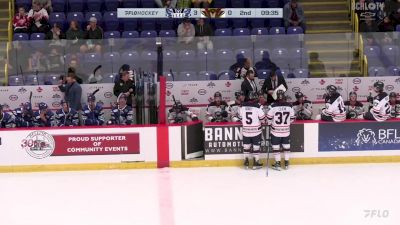 Replay: Away - 2024 Penticton vs Vernon | Apr 23 @ 8 PM
Replay: Away - 2024 Penticton vs Vernon | Apr 23 @ 8 PMApr 24, 2024
 Replay: Home - 2024 Penticton vs Vernon | Apr 23 @ 8 PM
Replay: Home - 2024 Penticton vs Vernon | Apr 23 @ 8 PMApr 24, 2024
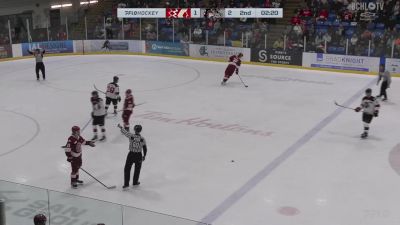 Replay: Away - 2024 Chilliwack vs Alberni Valley | Apr 23 @ 7 PM
Replay: Away - 2024 Chilliwack vs Alberni Valley | Apr 23 @ 7 PMApr 24, 2024
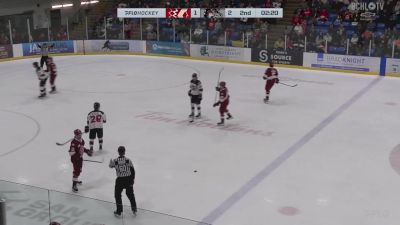 Replay: Home - 2024 Chilliwack vs Alberni Valley | Apr 23 @ 7 PM
Replay: Home - 2024 Chilliwack vs Alberni Valley | Apr 23 @ 7 PMApr 24, 2024
 Replay: Away - 2024 Surrey vs Victoria | Apr 23 @ 7 PM
Replay: Away - 2024 Surrey vs Victoria | Apr 23 @ 7 PMApr 24, 2024
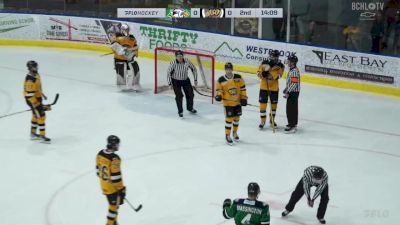 Replay: Home - 2024 Surrey vs Victoria | Apr 23 @ 7 PM
Replay: Home - 2024 Surrey vs Victoria | Apr 23 @ 7 PMApr 24, 2024
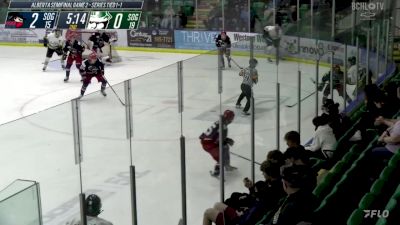 Replay: Home - 2024 Brooks vs Okotoks | Apr 23 @ 7 PM
Replay: Home - 2024 Brooks vs Okotoks | Apr 23 @ 7 PMApr 24, 2024
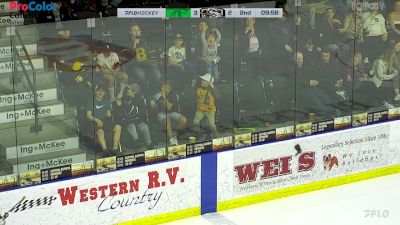 Replay: Away - 2024 Sherwood Park vs Blackfalds | Apr 23 @ 7 PM
Replay: Away - 2024 Sherwood Park vs Blackfalds | Apr 23 @ 7 PMApr 24, 2024
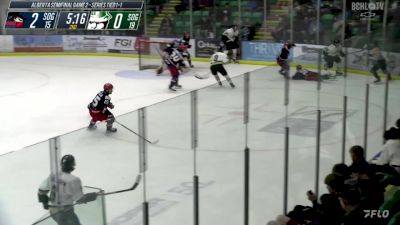 Replay: Away - 2024 Brooks vs Okotoks | Apr 23 @ 7 PM
Replay: Away - 2024 Brooks vs Okotoks | Apr 23 @ 7 PMApr 24, 2024